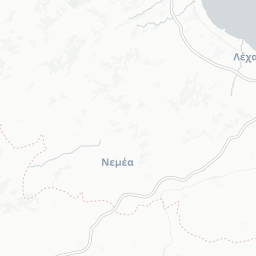






Isthmia Excavation 1932-1933: Season 1932
Excavation: Research excavation
Previous excavations in the area by the French 1884-5 and the Greeks 1912. Also visited by Fimmen in 1914, whose suggestions formed the foundation of this excavation. The artificially erected terrace mentioned by Fimmen proved not to be in the same place as the remains indicated by Monceaux. The latter were found to belong to a Roman building of some size standing immediately on rock, which showed no traces of previous occupation. Trenches in the immediate neighbourhood yielded the same results. Thus the conclusion of Monceaux, who maintained the late date of the remains in this area, were confirmed. The artificial terrace referred to by Fimmen enclosed a square area towards the west, which again provided traces of Roman occupation only, while a close examination of the actual terracing and rock-cutting showed that these belonged to the same period. On the other hand, investigation of a section of the foundations of the Temenos wall confirmed once and for all Fimmen's view that it is of purely Byzantine origin, having been built in connection with the Peloponnese wall by Justinian (Phrantzes, I, 33). The wall was of uniform construction to the bottom, and late Roman and Byzantine sherds were extracted from beneath it. These results were sufficiently discouraging from the point of view of the main purpose of the excavation, which was to discover traces of the archaic and classical Temenos of Poseidon. Trials were subsequently made some 200 yards further west, at the rim of a ravine which descends from the modern village of Kgpocq Bp6are. Here trial trenches at length produced a considerable quantity of classical (Corinthian fifth-century) sherds; though here, too, the shallowness of the soil and sub- sequent Roman occupation were again conditions disadvantageous to the good preservation of earlier remains. But lower down, actually in the side of the ravine, abundant and excellently preserved traces of a subterranean water- system of the classical settlement were discovered. The most interesting of these is a passage with a subsidiary cistern, rising to a height of six feet with all its plaster preserved. This invites thorough excavation, for a very small section of earth removed from its mouth produced sherds from the middle of the sixth century B.C., a sixth-century terracotta, numerous fifth-century sherds both Attic and Corinthian, fifth-century roof-tiles (two of these were painted and must have belonged to a building of some importance), and a very small proportion of Roman sherds. The system itself is probably of fifth-century date. No effort was made to empty the passage-way, owing to lack of time, but it is hoped that it will be possible to do so next year. Finally, it was necessary to test the statements of Monceaux and of the Greek excavator, Stais, as to the shallowness of the soil and absence of anything of classical date in the Temenos itself. For not merely does its natural situa- tion suggest this as the true Temenos, but also its position between the stadium and the theatre, its Roman triumphal arch, and the presence of many fragments of Doric drums of immense size enhance the probability. Stais had placed the level of virgin soil at some I-50-2 metres below the surface: it was therefore surprising to find that the first trench went down some 5 metres before virgin soil was reached, going through a metre of Roman concrete flooring, the top of which appeared at i-6o metres below ground level. The lowest metre contained classical sherds and the foundations of a Roman wall: there is reason to think that previous excavators may have failed to dig deep enough in this part, since the classical sherds found here are, so far as can be ascertained, the only classical objects from the spot.
Active in 1932.
[Journal] The Annual of the British School at Athens, no. 32 (1931/1932).

